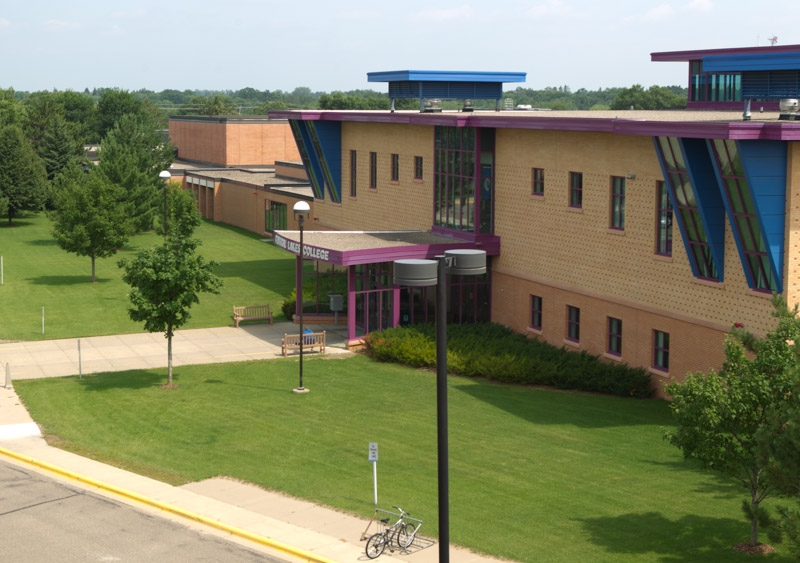Economics Transfer Pathway A.A. Degree
Program Information
It is often suggested that economics is the study of peoples’ efforts to satisfy their unlimited wants by utilizing their limited resources. Economics studies the cost implications of an individual making a decision to go to college, the cost implications of a society making a decision to go to war, and everything in-between. Economics might be the most broadly applied of the social sciences because economists believe that all human decisions have economic costs and, therefore, are worthy of economic analysis. The Economics Transfer Pathway provides a broad base of general education relevant to economics careers, and prepares students for transfer into an Economics baccalaureate degree at Minnesota State universities. A bachelor’s degree in economics will open doors into a number of career fields including management, public administration, public policy, banking, education, and business. It may also be a step to advanced degrees in many fields.
Program Outcomes
Graduates will be able to:
- Ask an economic question, gather information and resources, form an explanatory hypothesis, collect data that can be used to test the hypothesis, analyze the data, draw conclusions, and suggest future research;
- Work with mathematical formalizations of economic models and perform mathematical operations; explain the design and results of laboratory and field experiments; and explain the conduct, results, and limitations of basic econometrics;
- Explain economic models as deliberate simplifications of reality that economists create to think through complex, nondeterministic behaviors; identify the assumptions and limitations of each model and their potential impacts;
- Explain the strengths and limitations of economic data and statistical analyses; and think creatively and combine or synthesize existing economic ideas in original ways; and
- Demonstrate knowledge of major economic institutions and familiarity with magnitudes of common economic statistics.
Special Program Requirements
- These requirements apply to new students, and students who have been absent from this college one academic year or longer.
- At least one semester before you plan to graduate, complete an Application to Graduate.
- Student must obtain a grade of “C” or higher in each of the four required (12 credits) Communications courses.
- A total of 60 college level credits with a cumulative GPA of 2.0 or higher are required for an Associate of Arts Degree.
- A cumulative GPA of 2.0 or higher in all Minnesota Transfer Curriculum courses is required to complete the MnTC.
- 15 credits must be earned at Central Lakes College to be eligible for an Associate of Arts Degree.
- Classes may meet requirements for more than one goal area, but credit will not be awarded for any course twice.
Transfer Opportunities
The Economics Transfer Pathway A.A. Degree offers students a powerful option: the opportunity to complete an Associate of Arts degree with course credits that directly transfer to designated Economics bachelor’s degree programs at Minnesota State universities. The curriculum has been specifically designed so students completing this pathway degree and transferring to a Minnesota State university may enter with junior-year status. Courses in the Economics Transfer Pathway associates degree will directly transfer and apply to the designated bachelor’s degree programs. Students should consult with an advisor for guidance regarding how to best meet the requirements of their intended baccalaureate program. Universities within the Minnesota State system participating in the Economics Transfer Pathways include: • Bemidji State University – BS • Metropolitan State University – BS • Minnesota State University, Mankato – BS • Minnesota State University, Moorhead – BA • St. Cloud State University – BA • Winona State University – BA
Employment Statistics
For more information regarding employment statistics, career salary information and estimated job growth, follow the resource links below:
https://apps.deed.state.mn.us/lmi/ces/
http://www.bls.gov/ooh/home.htm
Salary information from indeed.com

Program Course Requirements
Required Discipline Courses (13 credits)
ECON 2401 Principles of Economics – Macroeconomics (Goal 5), 3 cr
ECON 2402 Principles of Economics – Microeconomics (Goal 5), 3 cr
MATH 1460* Introduction to Statistics (Goal 4) OR
MATH 1461* Honors Intro to Statistics (Goals 2,4), 4 cr
MATH 1470 College Algebra (Goal 4), 3 cr
Required MnTC Courses
An A.A. degree requires a minimum of 40 credits, complete all ten goal areas and a cumulative 2.0 GPA for the Minnesota Transfer Curriculum (MnTC).
Goal 1 – Communications, 9-11 cr
ENGL 1410 Composition I (Goal 1) OR
ENGL 1420* Honors Composition I (Goal 1)
ENGL 1411* Composition II (Goal 1) OR
ENGL 1421* Honors Composition II (Goals 1,9)
Recommended:
COMM 2420 Intercultural Communication (Goals 1,7A,7B) OR
COMM 2422* Honors Intercultural Comm (Goals 1,7A,7B)
Goal 2 – Critical Thinking**, 1 course
Goal 3 – Natural Sciences, 6 cr
2 disciplines recommended, 1 lab course required
Goal 4 – Math/Logical Reasoning, Met with required course
Goal 5 – History/Social Behavioral Sciences, 3 cr
Choose any discipline other than ECON.
Goal 6 – Humanities and Fine Arts, 9 cr
Recommended:
PHIL 2410 Intro to Philosophy (Goals 2,6)
2 disciplines required, 3 recommended
Goal 7 – Human Diversity or Race, Power & Justice**, 1 course
Goal 8 – Goal Perspective**, 1 course
Goal 9 – Ethic and Civic Responsibility**, 1 course
Goal 10 – People and The Environment**, 1 course
Fitness for Life, 2 cr
HLTH or PHED Fitness for Life course
Student Success, 1-3 cr
Recommended:
CCST 1550 Introduction to College
Electives, As needed to total 60 credits
*Denotes Prerequisites
**Many courses from Goals 1 – 6 also meet Goals 7 – 10. Credits count only once. Students are advised to select MnTC courses with multiple goal assignments whenever possible.
GRADUATION REQUIREMENT – 60 CREDITS
Program Instructors
| Photo | First Name | Last Name | Position | Department | Phone | Alt. Phone: | URL | wdt_ID | Details | |
|---|---|---|---|---|---|---|---|---|---|---|
 |
Aubrey | Beadell | Advisor | TRIOStudentSupportServices | (218) 855-8014 | aubrey.beadell@clcmn.edu | 1 | More details | ||
 |
Nick | O'Reilly | Occupational Skills Program College Lab Assistant | OccupationalSkills | 218-855-8077 | Nicholas.oreilly@clcmn.edu | 2 | More details | ||
 |
Kevin | Lomax | Automotive Lab Assistant | Automotive Faculty | 218-855-8000 | KLomax@clcmn.edu | 3 | More details | ||
 |
Jody | Flynn | Accessibility Services Assistant | Accessibility | 218-855-8056 | jody.flynn@clcmn.edu | 5 | More details | ||
 |
Deana | Bobzien | Instructor | CollegeCareerStudies - Mathematics - Supportive Services | 218-855-8339 | deana.bobzien@clcmn.edu | 7 | More details | ||
 |
Brianna | Rajkowski | Advisor | TRIOStudentSupportServices | 218-855-8228 | brianna.rajkowski@clcmn.edu | 8 | More details | ||
 |
Tajia | Anderson | PSEO Specialist | Admissions - CollegeCreditInHighSchool- PSEO | (218) 855-8079 | tajia.anderson@clcmn.edu | 10 | More details | ||
 |
David | Gray | Instructor | History | 218-855-8189 | david.gray@clcmn.edu | 14 | More details | ||
 |
Jim | Nagy | Adjunct Instructor | GraphicDesign | 218-855-8157 | james.nagy@clcmn.edu | 15 | More details | ||
 |
Brandon | Schneider | Instructor | HeavyEquipment | 218-894-5179 | brandon.schneider@clcmn.edu | 16 | More details | ||
 |
Natalia | DePauw | Director of Dual Enrollment | PSEO - CollegeCreditInHighSchool - Advising | 218-855-8263 | natalia.depauw@clcmn.edu | 18 | More details | ||
| Amy | Disterhaupt | Admissions Specialist | Admissions | 218-855-8250 | amy.disterhaupt@clcmn.edu | 20 | More details | |||
 |
Nick | Heisserer | Dean of Brainerd Career & Technical Programs | Administration | 218-855-8067 | nick.heisserer@clcmn.edu | 21 | More details | ||
 |
Matthew | Krueger | Environmental Health and Safety Officer | Maintenance - Security - Safety | 218-855-8115 | matthew.krueger@clcmn.edu | 22 | More details | ||
 |
Mark | Lindquist | Instructor | Music | 218-855-8203 | mark.lindquist@clcmn.edu | 23 | More details | ||
 |
Jeremy | Goddard | Bookstore/Print Shop | Bookstore Supportive Services | 218-855-8146 | Jeremy.Goddard@clcmn.edu | 25 | More details | ||
 |
Sarah | Jennissen | Instructor | PracticalNursing | 218-894-5308 | sarah.jennissen@clcmn.edu | 26 | More details | ||
 |
Cash | Robinson | Academic Advisor | TRIOUpwardBound - Advising | 218-855-8035 | cash.robinson@clcmn.edu | 28 | More details | ||
 |
Ryan | Wright | Enrollment Representative | Admissions - CampusTours | 218-855-8013 | ryan.wright@clcmn.edu | 31 | More details | ||
 |
Steve | Wenzel | Instructor | PoliticalScience | 218-855-8073 | stephen.wenzel@clcmn.edu | 32 | More details | ||
 |
Julie | Woitalla | Instructor | NursingASDegree | 218-855-8168 | julie.woitalla@clcmn.edu | 33 | More details | ||
 |
Josh | Zaborowski | Upward Bound Advisor | TRIOUpwardBound - Assessment | 218-855-8032 | joshua.zaborowski@clcmn.edu | 35 | More details | ||
 |
Paul | Zimmerman | Instructor | Diesel Faculty | 218-894-5143 | paul.zimmerman@clcmn.edu | 36 | More details | ||
 |
Ed | Uhlenkamp | Instructor | FarmBusinessManagement | 218-894-5160 | edward.uhlenkamp@clcmn.edu | https://dynamicforms.ngwebsolutions.com/ShowForm.aspx?RequestedDynamicFormTemplate=32c40b45-028c-46d6-9f79-9c1edc503713 | 38 | More details | |
 |
James | Velde | Instructor | FarmBusinessManagement | 218-234-3981 | james.velde@clcmn.edu | https://dynamicforms.ngwebsolutions.com/ShowForm.aspx?RequestedDynamicFormTemplate=cff3bff4-005f-4f5c-82a8-4c6aed02c8e9 | 39 | More details |
Photo:
First Name:
Last Name:
Position:
Phone:
Email:
